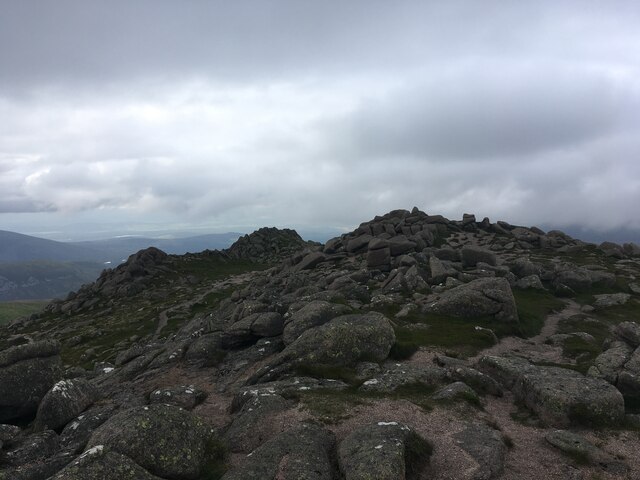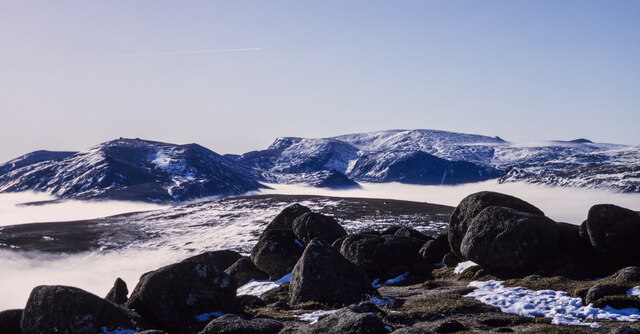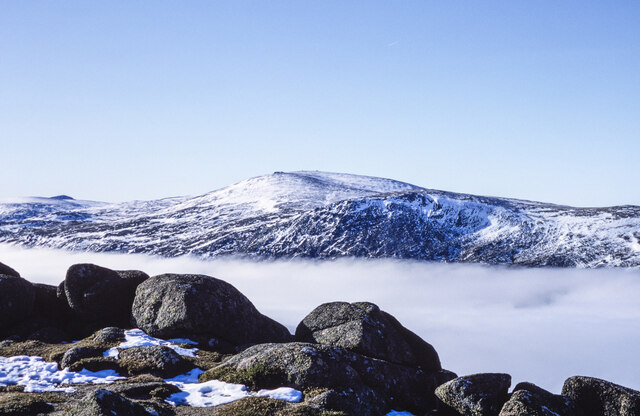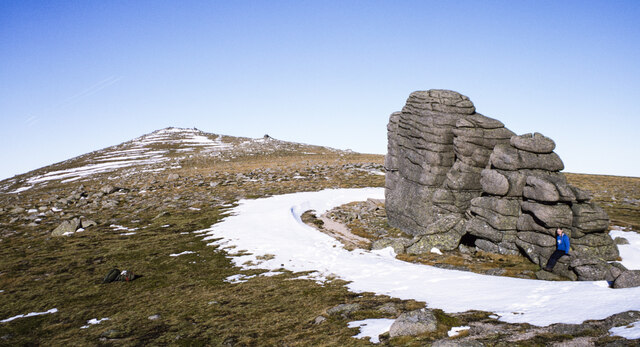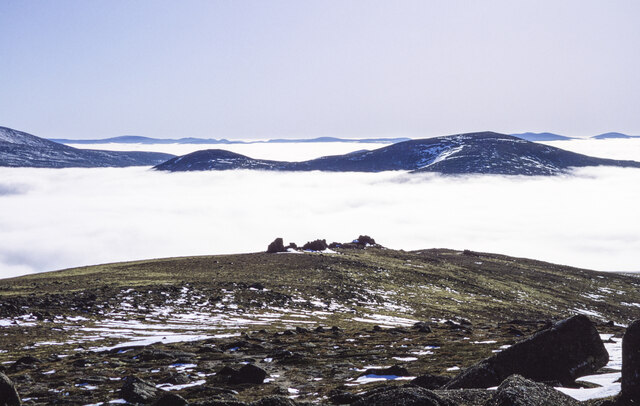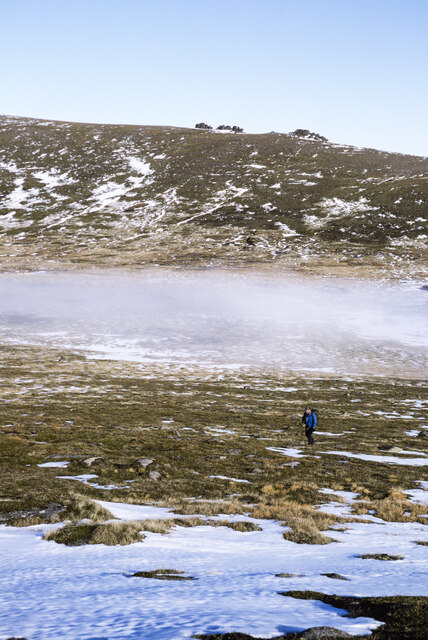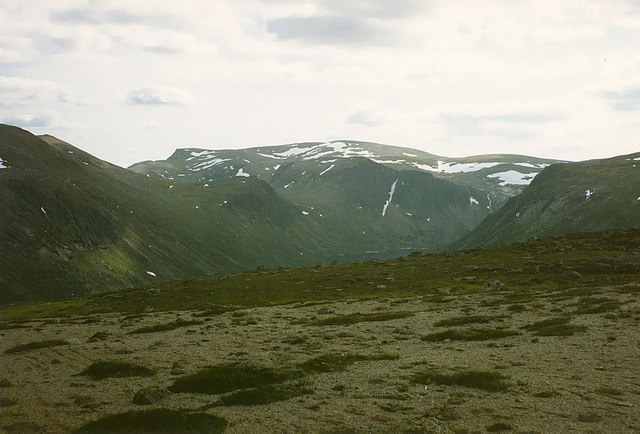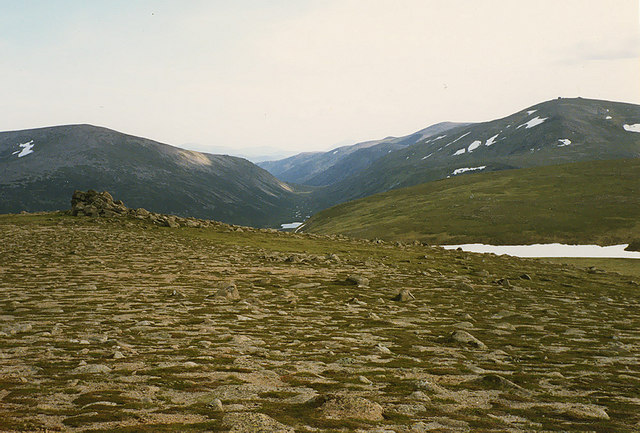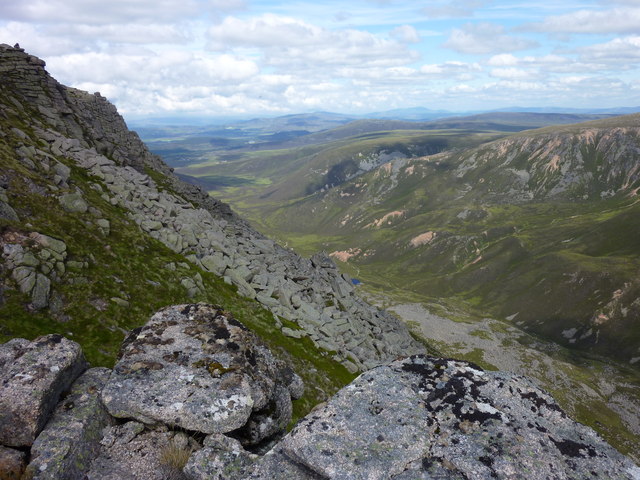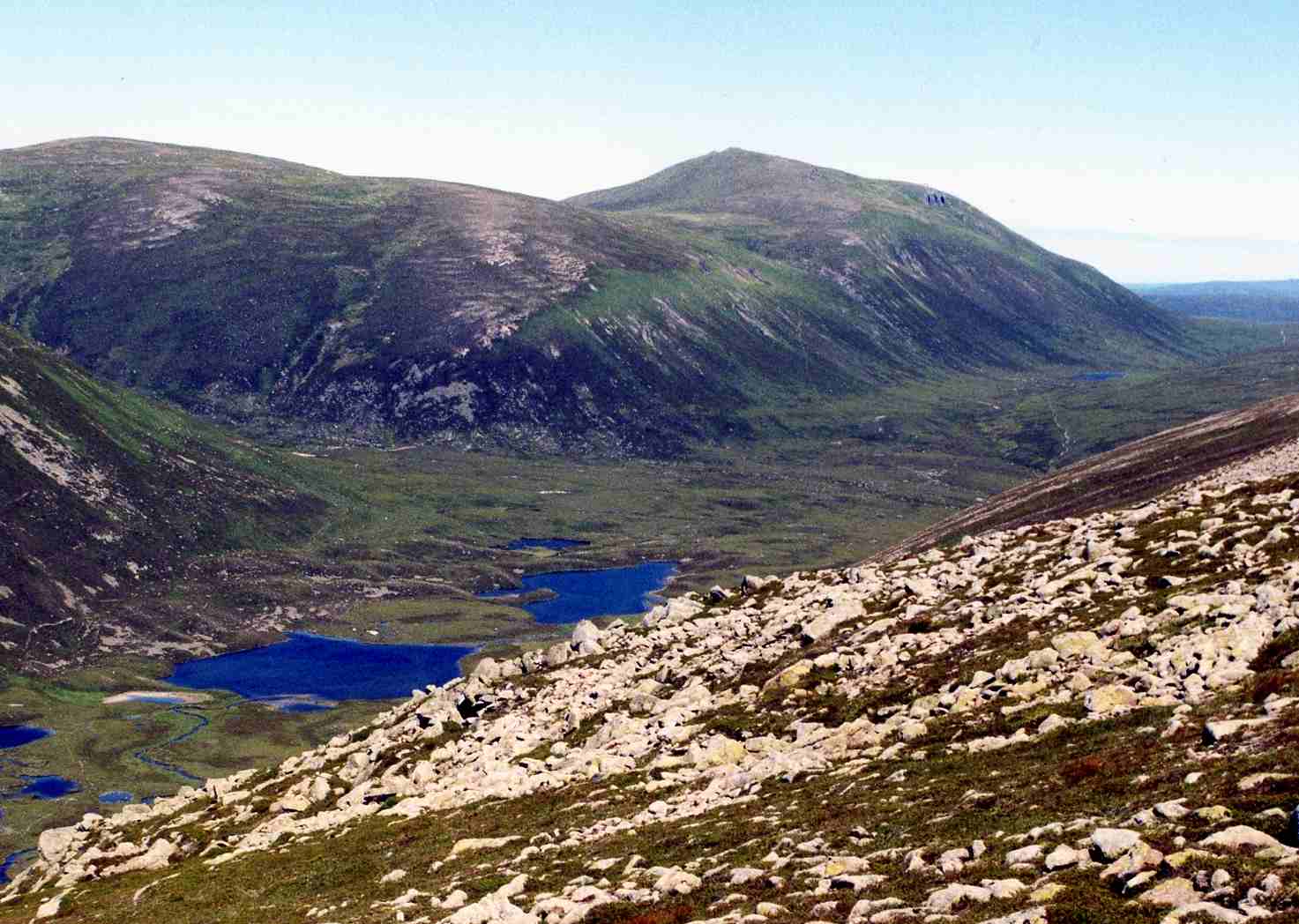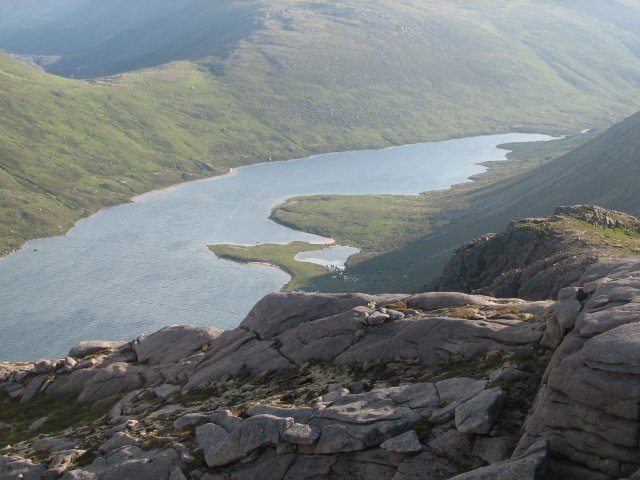A' Chòinneach
Hill, Mountain in Inverness-shire
Scotland
A' Chòinneach
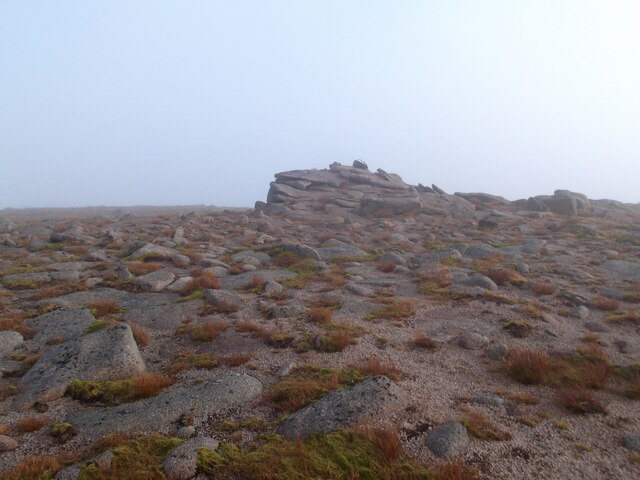
A' Chòinneach is a prominent hill located in Inverness-shire, Scotland. Standing at an impressive height of 712 meters (2,336 feet), it offers breathtaking panoramic views of the surrounding landscapes. The hill is part of the Monadhliath Mountains range, which stretches across Highland and Moray.
A' Chòinneach is characterized by its rugged and rocky terrain, with steep slopes and craggy cliffs that challenge the most experienced hikers and mountaineers. The summit is a distinctive feature, marked by a large cairn that acts as a navigational aid for those venturing through the area.
The hill is encompassed by diverse vegetation, including heather, grasses, and scattered patches of woodland. This rich flora provides a habitat for various wildlife species, such as red deer, mountain hares, and golden eagles, making A' Chòinneach an attractive destination for nature enthusiasts and wildlife photographers.
Due to its location, A' Chòinneach is subject to the unpredictable Scottish weather. It is not uncommon to experience sudden changes in conditions, including strong winds, heavy rainfall, and mist. Therefore, proper equipment and preparation are essential for anyone planning to explore this mountain.
The surrounding area offers several walking trails and routes, catering to different levels of difficulty and duration. These paths provide opportunities for visitors to immerse themselves in the beauty of the Scottish Highlands while enjoying the tranquility and serenity that A' Chòinneach has to offer.
If you have any feedback on the listing, please let us know in the comments section below.
A' Chòinneach Images
Images are sourced within 2km of 57.124349/-3.6002486 or Grid Reference NJ0304. Thanks to Geograph Open Source API. All images are credited.
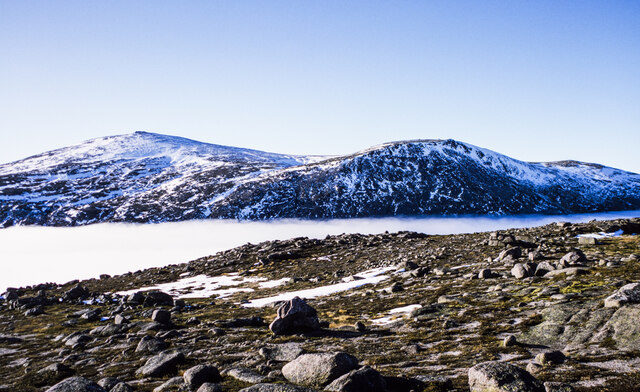
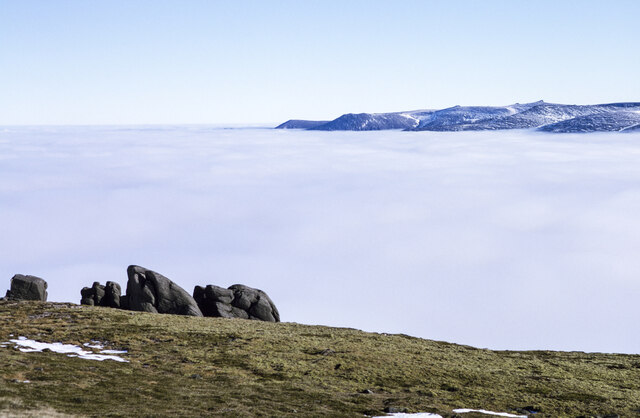
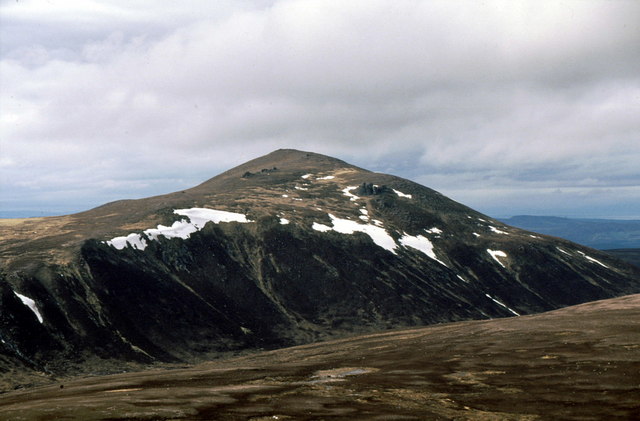
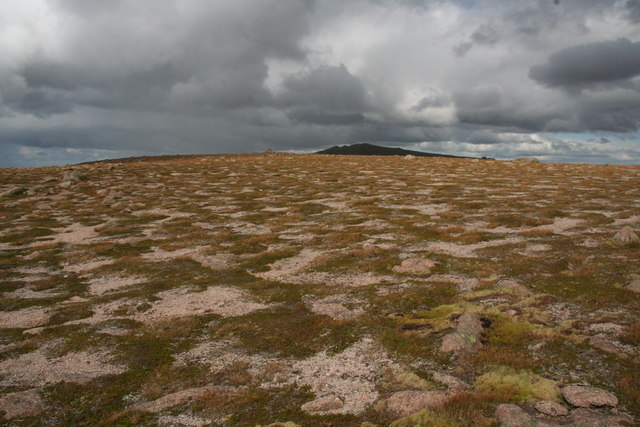
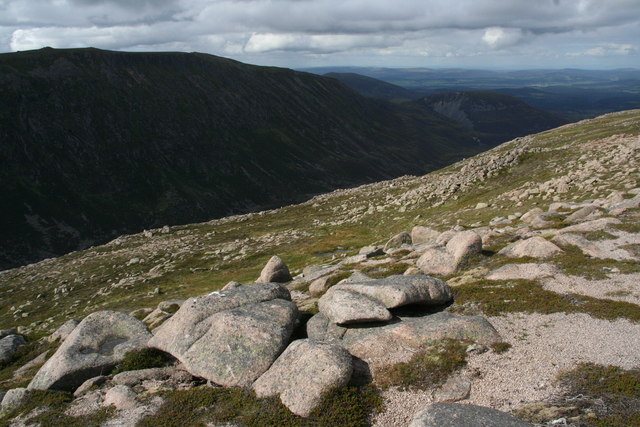
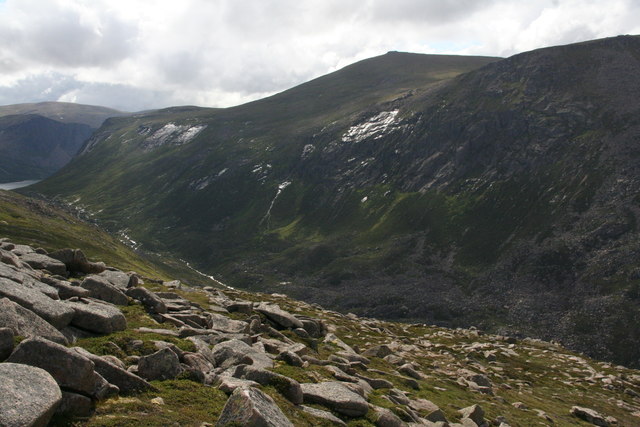
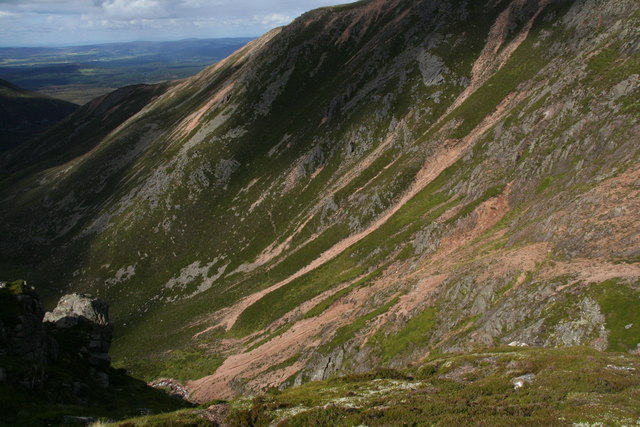
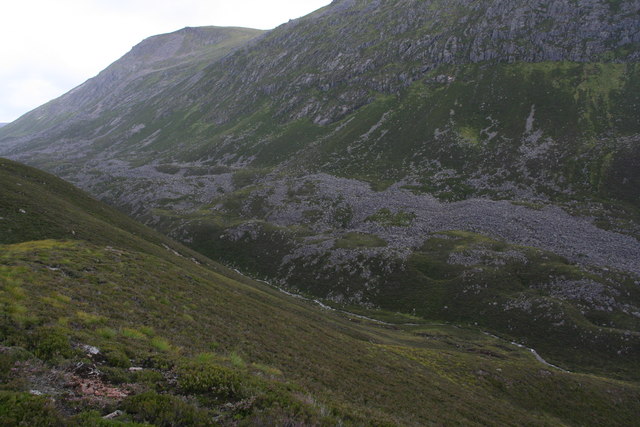
A' Chòinneach is located at Grid Ref: NJ0304 (Lat: 57.124349, Lng: -3.6002486)
Unitary Authority: Highland
Police Authority: Highlands and Islands
What 3 Words
///oxidation.events.channel. Near Aviemore, Highland
Nearby Locations
Related Wikis
Bynack More
Bynack More (Scottish Gaelic: A' Bheithneag Mhòr or Beinn Bheithneag) is a Scottish Mountain that is situated in the Cairngorms range, 16 kilometres east...
Cairn Gorm
Cairn Gorm (Scottish Gaelic: An Càrn Gorm) is a mountain in the Scottish Highlands. It is part of the Cairngorms range and wider Grampian Mountains. With...
Loch A'an
Loch A'an is a remote freshwater loch set deep within the central Cairngorms plateau, in the Cairngorms National Park, located in the eastern Highlands...
Cairngorm Lochs
Cairngorm Lochs is a protected wetland area in the Cairngorms, in the Grampian and Highland regions of Scotland. With a total area of 173 hectares, it...
Nearby Amenities
Located within 500m of 57.124349,-3.6002486Have you been to A' Chòinneach?
Leave your review of A' Chòinneach below (or comments, questions and feedback).
